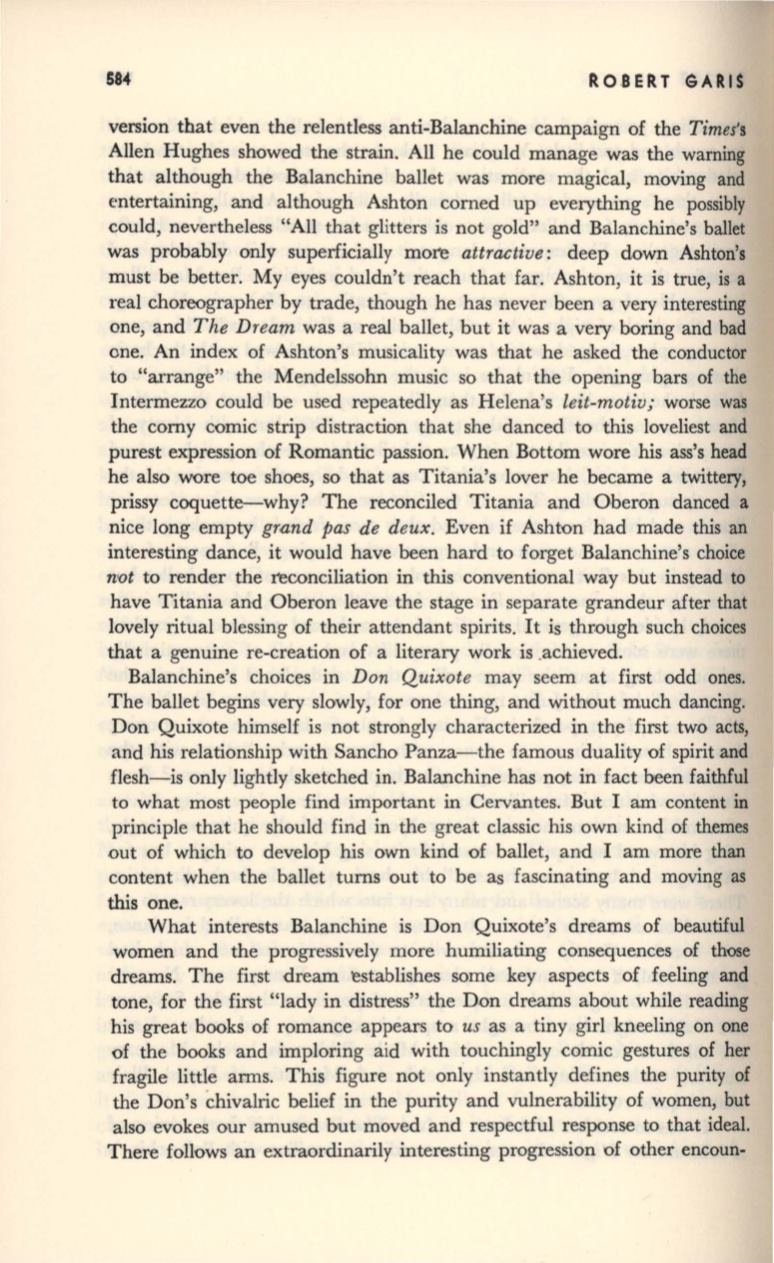
RO ,BEltT
GARIS
version that even the relentless anti-Balanchine campaign of the
Times's
Allen Hughes showed the strain. All he could manage was the warning
that although the Balanchine ballet was more magical, moving and
entertaining, and although Ashton corned up everything he possibly
could, nevertheless "All that glitters is not gold" and Balanchine's ballet
was probably only superficially more
attractive:
deep down Ashton's
must be better. My eyes couldn't reach that far. Ashton, it is true, is a
real choreographer by trade, though he has never been a very interesting
one, and
The Dream
was a real ballet, but it was a very boring and bad
one. An index of Ashton's musicality was that he asked the conductor
to "arrange" the Mendelssohn music so that the opening bars of the
Intermezzo could be used repeatedly as Helena's
leit-motiv;
worse was
the corny comic strip distraction that she danced to this loveliest and
purest expression of Romantic passion. When Bottom wore his ass's head
he also wore toe shoes, so that as Titania's lover he became a twittery,
prissy coquette--why? The reconciled Titania and Oberon danced a
nice long empty
grand
pas
de deux.
Even if Ashton had made this an
interesting dance, it would have been hard to forget Balanchine's choice
not
to render the reconciliation in this conventional way but instead to
have Titania and Oberon leave the stage in separate grandeur after that
lovely ritual blessing of their attendant spirits. It is through such choices
that a genuine re-creation of a literary work is .achieved.
Balanchine's choices in
Don Quixote
may seem at first odd ones.
The ballet begins very slowly, for one thing, and without much dancing.
Don Quixote himself is not strongly characterized in the first two acts,
and his relationship with Sancho Panza-the famous duality of spirit and
flesh-is only lightly sketched in. Balanchine has not in fact been faithful
to what most people find important in Cervantes. But I am content in
principle that he should find in the great classic his own kind of themes
out of which to develop his own kind of ballet, and I am more than
content when the ballet turns out to be as fascinating and moving as
this one.
What interests Balanchine is Don Quixote's dreams of beautiful
women and the progressively more humiliating consequences of those
dreams. The first dream 'establishes some key aspects of feeling and
tone, for the first "lady in distress" the Don dreams about while reading
his great books of romance appears to
us
as a tiny girl kneeling on one
of the books and imploring aid with touchingly comic gestures of her
fragile little arms. This figure not only instantly defines the purity of
the Don's chivalric belief in the purity and vulnerability of women, but
also evokes our amused but moved and respectful response to that ideal.
There follows an extraordinarily interesting progression of other encoun-


